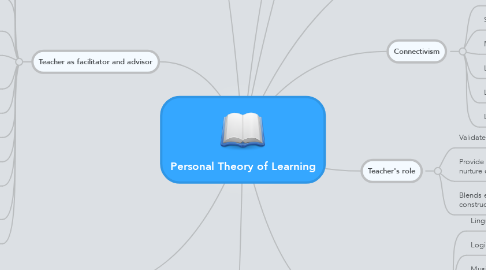Personal Theory of Learning
by Bonnie Sibley


1. Social Constructivist
1.1. Learner Centred
1.1.1. Detail 1
1.1.2. Detail 2
1.2. Communicate to construct knowledge
1.2.1. Detail 1
1.2.2. Detail 2
1.3. Authentic Material
1.3.1. Detail 1
1.3.2. Detail 2
